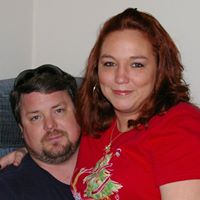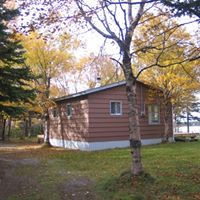Ronald E Hogan
age ~83
from Saint Helena, CA
- Also known as:
-
- Ronald Eugene Hogan
- Ronald J Hogan
- Ronald R Hogan
- Hogan Hogan
- Phone and address:
-
1522 Chablis Cir, Saint Helena, CA 94574
7079678302
Ronald Hogan Phones & Addresses
- 1522 Chablis Cir, Saint Helena, CA 94574 • 7079678302
- 1220 Sandalwood Ln, Los Altos, CA 94024 • 7079678302
- Palo Alto, CA
- 2767 Buena Point Ct, San Jose, CA 95121 • 7079678302
Resumes

Ronald Hogan
view source
Ronald Hogan
view source
Ronald Hogan
view source
Ronald Hogan
view source
Ronald Hogan
view source
Ronald Hogan
view sourceUs Patents
-
Sampling Signal Analyzer
view source -
US Patent:51627230, Nov 10, 1992
-
Filed:Feb 11, 1991
-
Appl. No.:7/654451
-
Inventors:Michael S. Marzalek - Petaluma CA
Richard C. Keiter - Healdsburg CA
John A. Wendler - Santa Rosa CA
Stephen R. Peterson - Santa Rosa CA
Ronald J. Hogan - Santa Rosa CA -
Assignee:Hewlett-Packard Company - Palo Alto CA
-
International Classification:G01R 2302
-
US Classification:324 77B
-
Abstract:A sampling signal analyzer in which the frequency of an input signal to be measured is initially ascertained, an appropriate sampling frequency is then determined, data needed to reconstruct the wave form of the input signal is acquired, and the input signal wave shape is reconstructed with a calibrated time axis and preferably displayed. The sampling signal analyzer synthesizes a sampler drive signal to enable continuous sampling of the input signal and therefore has the advantage over known data sampling signal measurement instruments that it is not triggered directly in response to the level of the input signal to be measured. Instead, sample timing is based on numerical analysis of the intermediate frequency (IF) signal produced by the sampler. The IF frequency can be an arbitrarily low frequency, which allows digitizing and digital signal processing for aligning measurement data from sweep to sweep with precision. The sampling signal analyzer operates so that all frequency components of the input signal will lie within plus or minus an IF bandwidth away from a comb tooth of a sampling frequency and will translate (i. e.
-
True Average Wide Dynamic Range Microwave Power Sensor Using Diode Stack Attenuator-Diode Stack
view source -
US Patent:62429019, Jun 5, 2001
-
Filed:Apr 9, 1999
-
Appl. No.:9/289295
-
Inventors:John C. Faick - Santa Rosa CA
Eric R. Ehlers - Santa Rosa CA
Ronald J. Hogan - Santa Rosa CA
Ajay A. Prabhu - Rohnert Park CA -
Assignee:Agilent Technologies Inc. - Palo Alto CA
-
International Classification:G01R 2304
G01R 1500
G01S 302 -
US Classification:324 95
-
Abstract:The invention provides a true average, wide dynamic range microwave power sensor using a diode-stack-attenuator diode stack technology. The invention provides a diode stack microwave power sensor which includes an RF signals receiver having wide dynamic power ranges; a low power sensor path connected between the receiver and ground for sensing relatively low power RF input signals. The low power sensor path includes one or more stacked RF diodes in which a number of diode pairs may be coupled to ground through respective capacitors. An impedance network including attenuating resistors R1 and R2 are connected in series between the receiver and ground. A high power sensor path is connected in parallel between the attenuating resistors R1 and R2 and ground for sensing attenuated relatively high power RF input signals. The high sensor path includes a second stacked RF diode in which a second number of stacked diode pairs are coupled to ground through a respective capacitor, and in which the sensor diode operates in the square law region and senses the power levels over the wide dynamic ranges of the received RF signals.
Isbn (Books And Publications)


Name / Title
Company / Classification
Phones & Addresses
Manager
Archipelagr
Securities and Commodity Exchanges
Securities and Commodity Exchanges
115 Sansome St, San Francisco, CA 94104
4153934000
4153934000
President,Treasurer
INNERGIES, INC
President
The H2 Group, Inc
Business Services
Business Services
49 Willow Ave, Walnut Creek, CA 94595
President
THR BUILDING SERVICES, INC
1755 Van Ness Ave STE 405, San Francisco, CA 94109
Wikipedia References

Ronald Hogan
Myspace
Plaxo

Ronald Hogan.
view sourceGoogleplus

Ronald Hogan

Ronald Hogan

Ronald Hogan

Ronald Hogan
Classmates

Ronald Hogan
view sourceSchools:
Sierra Avenue Elementary School Oroville CA 2000-2001
Community:
Tiffani White, Scott Herrick

Ronald Hogan
view sourceSchools:
Bogalusa High School Bogalusa LA 1972-1976
Community:
Danny Joplin, Shuntel Morris, Cheryl Cooper

Ronald Hogan
view sourceSchools:
Norwich Regional Vocational High School Norwich CT 1974-1978
Community:
James Farmer, Jenn Weiss, Michele Tyler

Ronald Hogan
view sourceSchools:
Griswold High School Griswold CT 1974-1978, Norwich Regional Vocational High School Norwich CT 1975-1978
Community:
Wally Griffin, Storm Connors, Judith Mushero

Ronald Hogan
view sourceSchools:
Metropolis Community High School Metropolis IL 1960-1964
Community:
Larry Blankenship, Bill Harris, Patti Tanner, Diane Corse, Sharon Wieneke

Ronald Hogan, Salem High ...
view source
Burt High School, Clarksv...
view sourceGraduates:
Ronald Hogan (1964-1968),
John Gold Gold (1964-1968),
George Cross (1962-1966),
Alexandria McKnight (1959-1963)
John Gold Gold (1964-1968),
George Cross (1962-1966),
Alexandria McKnight (1959-1963)

Danville High School, Dan...
view sourceGraduates:
Ronald Hogan (1970-1974)

Ronald Hogan
view source
Ronald Hogan
view source
Ronald Hogan
view source
Ronald Hogan
view source
Ronald Hogan
view source
Ronald Hogan
view source
Ronald Hogan
view source
Ronald Hogan
view sourceFlickr
Youtube
Get Report for Ronald E Hogan from Saint Helena, CA, age ~83
















